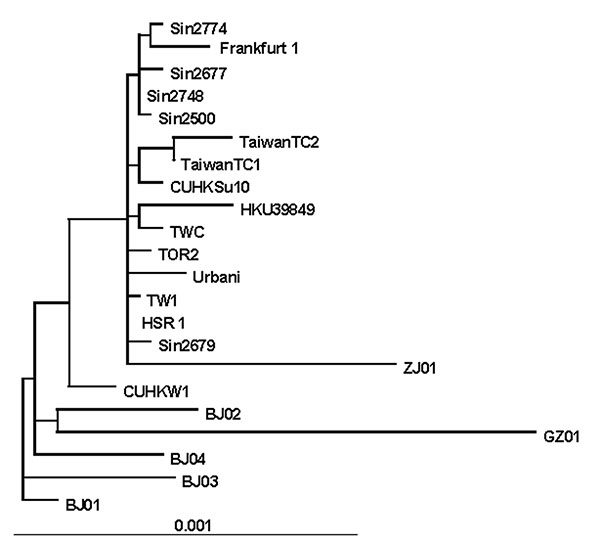Volume 10, Number 3—March 2004
Research
Coronaviridae and SARS-associated Coronavirus Strain HSR1
Figure 4

Figure 4. Phylogenetic tree obtained by applying PAUP* (maximum-likelihood methods using the p-distance model) applied to complete genome sequences of the severe acute respiratory syndrome–associated coronavirus (SARS-CoV) HSR1 strain and the 21 other SARS-CoV isolates.
Page created: February 08, 2011
Page updated: February 08, 2011
Page reviewed: February 08, 2011
The conclusions, findings, and opinions expressed by authors contributing to this journal do not necessarily reflect the official position of the U.S. Department of Health and Human Services, the Public Health Service, the Centers for Disease Control and Prevention, or the authors' affiliated institutions. Use of trade names is for identification only and does not imply endorsement by any of the groups named above.